Apps Marketing Basics: 11 Powerful Strategies to Drive Installs

The mobile app industry is ultra-competitive.
Mobile device users are blessed with millions of apps to choose from to combat boredom, improve health, boost productivity, and more.
Thankfully, the number of potential mobile app users is rapidly growing, with an estimated 6.8 billion people using smartphones in 2023.
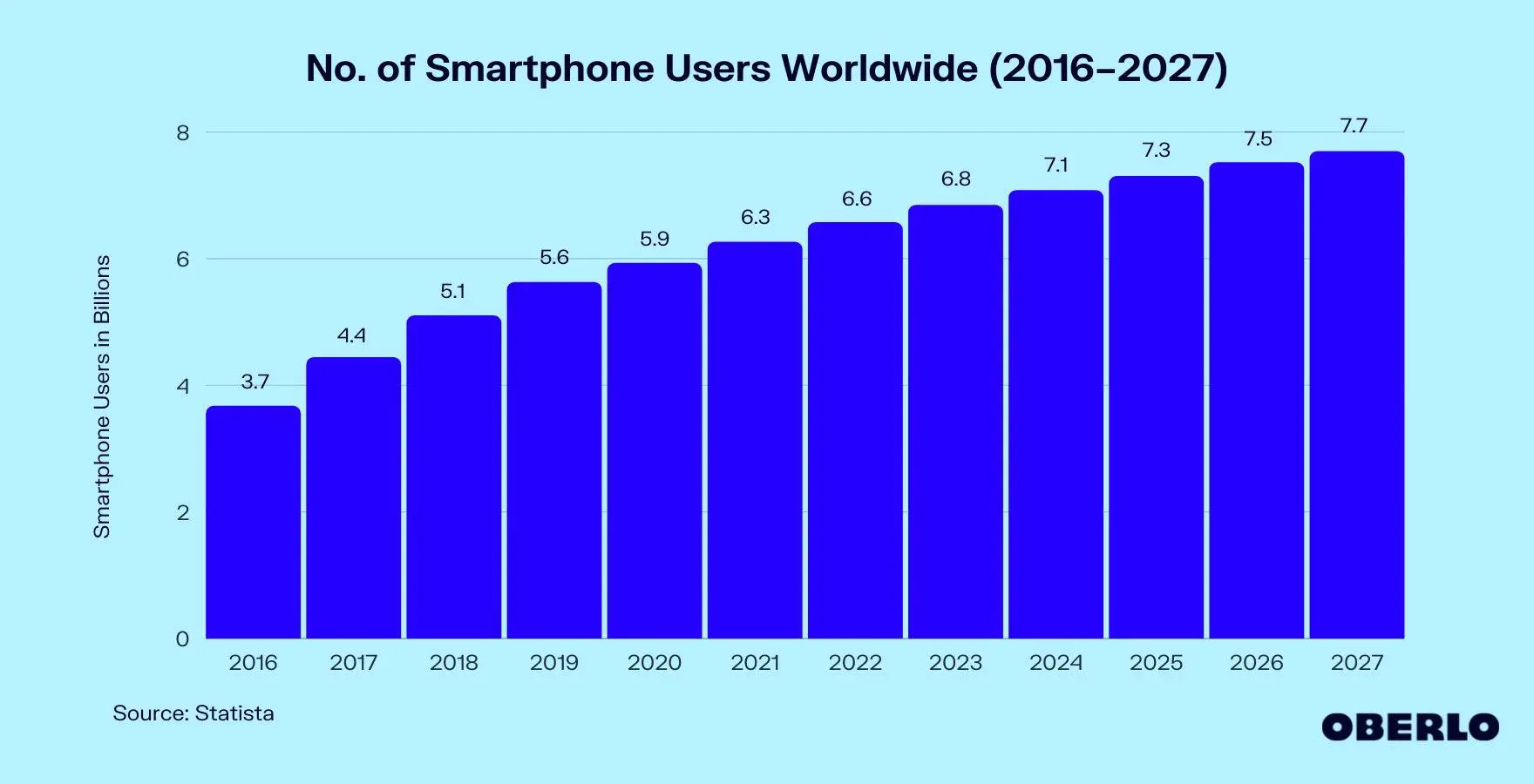
The number of smartphone users globally increases every year.
Source: Oberlo
There are certainly enough users for mobile app-based businesses to thrive. Yet, not all mobile apps will be successful — even if it’s the greatest thing since sliced bread.
A well-designed app was enough to acquire thousands of users in the less competitive market of yesteryear.
But the game has changed!
The same well-designed app can go virtually unnoticed in the industry, where hundreds of thousands of players come in and out daily. Therefore, it’s very important to deploy a marketing strategy that gives your app the attention it deserves!
In this blog post, I’ll share practical app marketing tactics that can help amplify your product’s visibility and drive more installs. Read on to equip your brand with simple yet powerful ways to increase your user base!
But before we get into that, let’s define app marketing.
What is mobile app marketing?
Mobile app marketing is the practice of spreading awareness for a mobile application to acquire users and retain them throughout their journey. It is one of the most important elements in boosting app install rates.
Key stages of mobile app marketing
- Pre-launch stage. The pre-launch stage of mobile app marketing involves generating anticipation to lay the foundation for a successful app launch. It’s also at this stage where extensive market research is conducted to understand the target audience, competition, and market trends.
- Launch stage. The launch stage of mobile app marketing focuses on executing a well-planned mobile app marketing strategy to drive initial downloads, user acquisition, and establish brand recognition for the app.
- Post-launch stage. After the app is launched, the focus shifts to user engagement and retention. Strategies are implemented to continuously improve the app to ensure user satisfaction and long-term success.
11 Powerful Mobile App Marketing Strategies
Pre-launch Stage
Launching an app without pre-launch marketing activities is akin to launching a product in an empty room. Thankfully, there are numerous pre-launch marketing strategies that can help an app hit the ground running immediately.
1. Conducting market and competitor research
Your users are crucial to the success of your app-based technology business. Without them, it’s almost impossible to have a profitable app.
So, it’s imperative to put the time and effort into understanding your target demographic. You may risk wasting valuable resources and reducing your chances of success if you skip this stage.
Before designing your marketing strategies, research the following details of your potential users:
- 📱 Age
- 📱 Location
- 📱 Industry
- 📱 Interests and lifestyle
- 📱 Income
- 📱 Influential leaders
- 📱 Web presence
When you have a more holistic understanding of your market, your strategies will align with their values and unique characteristics. You can also position your marketing collateral effectively in places where they frequent online or offline.
For example, Snapchat is a great place to run marketing collateral if your targeted demographic is under 20. But you might find it’s an ineffective place to advertise dentures to a target audience over 60 years old.
It’s also a great idea to observe market competitors to examine how they communicate with their audiences. The tactics and approaches they take may work well for you, too.
The more time you spend drilling down into your target audiences, the more likely you are to gain users, see a healthy return on your marketing budget, and make a profit.
2. Leveraging pre-order or pre-registration tools
Apple’s App Store allows developers the ability to offer iOS users an option to pre-order an app well ahead of its official release date.
Users can opt-in to download the unreleased app just as they would normally download any other app. But the app will only be downloaded to the user’s device when an official release date is reached.
Google’s Play Store also offers the same service to Android app developers under the name ‘Pre-Registration’.
Pre-orders or pre-registrations can mean a well-hyped app can potentially launch with hundreds of thousands of users on its first day of operation.
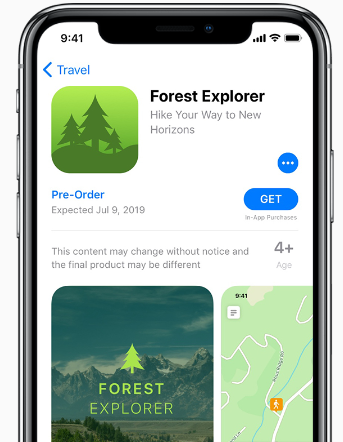
Take advantage of Apple’s pre-order system to clock up downloads before you launch.
Source: Apple
3. Creating a landing page
A similar ‘pre-order’ tactic can be used with a landing page and email opt-in form.
Landing pages are web pages that users land on after responding to a call to action from a marketing campaign. A great landing page visually showcases your app’s features, beautiful designs, and valuable benefits.
An opt-in form or button could also be prominently displayed so that the viewer can enter their email address to be the first to be notified when the app is launched. This is a particularly powerful strategy when combined with an incentive to sign up early, such as a discount or premium membership offer.
Another exciting pre-launch strategy is to use QR codes to boost app downloads. You could incorporate these QR codes in your marketing collaterals, and when users scan them, they immediately get directed to your landing page for pre-registration.
It’s all a matter of being innovative and creative — like one of our app development partners, Good Empire.
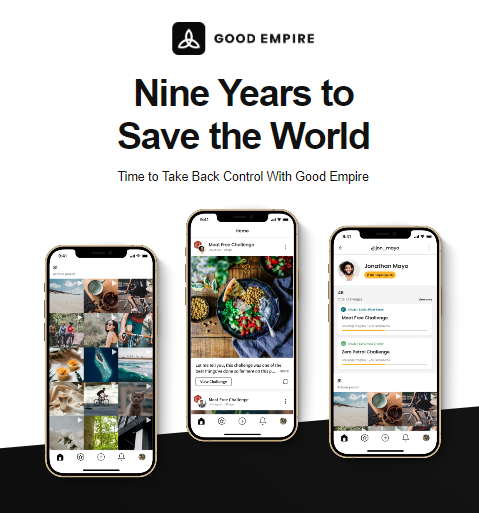
Even without a fully developed app, the social challenge app successfully completed not one but two crowdfunding rounds, raising over $1.5 million from more than 1,000 investors.
Good Empire leveraged our in-house engineered baseplate technology to design a world-class prototype, which serves as its most powerful tool to get users on board faster — resulting in massive marketplace traction out of the gate.
Check out the Good Empire case study to learn about their exciting story.
4. Implementing Search Engine Optimisation and Marketing (SEO + SEM) strategies
Even though you’re still building an app, we highly recommend creating a website presence for your app.
Websites are still an important part of digital marketing strategy. They provide a home for businesses, establish credibility, and attract thousands of users in organic and paid traffic.
But with so many online pages, how do search engines determine which web page is the best-suited result for each search query? This part is where search engine optimization (SEO) and search engine marketing (SEM) enter the picture.
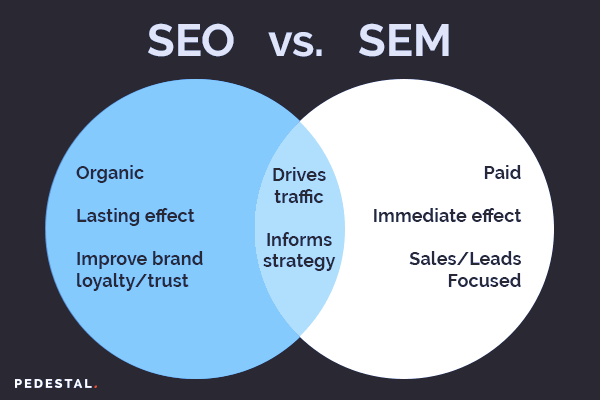
Source: Pedestal
What is SEO?
SEO uses relevant search terms or keywords related to your business or industry to create content that search engines rank the highest. To have a better chance at the top spot, you need to master the 4 pillars of SEO.
The 4 SEO pillars
1️⃣ Authority. Authority is the measure of trust, which is the most important thing regarding search ranking position.
One of the best ways of establishing authority is to develop links from quality websites pointing to your site. This will inform the search engine that your site has quality resources and content that other related websites trust.
2️⃣ Relevance. Relevance is the measure of a website’s content quality. High-relevance websites have well-written, factual, creative, and pertinent content. Search engines measure the quality of a website’s content by using natural language learning and artificial intelligence at a mass scale.
3️⃣ User Experience. User experience refers to a website’s ease of use. A search engine will negatively rank a website if it doesn’t display correctly on mobile devices, takes a long time to load, and is difficult to navigate or read.
On the other hand, a search engine will favor a website that delivers a seamless experience, thus providing the user with the best possible search result.
4️⃣ Site Health. Site health is a granular analysis of your website. It deals with the smaller details of your website, such as broken links and metadata (e.g., page descriptions and image ALT tags).
A healthy website resembles a well-filled form — no missing information or unanswered questions.
What is SEM?
SEM enables businesses to pay for advertisements at the top or bottom of search engine result rankings.
Businesses that desire certain keywords need to bid against other competitors to claim the corresponding top advertisement spots. Each time a user clicks on a search engine advertisement, the business that has the winning bid is then charged the amount that they were willing to bid to secure that top spot.
SEM can be expensive depending on how much your competition is willing to spend to acquire customers. However, many businesses justify the high cost of SEM as it can reliably attract thousands of qualified users with little effort.
Launch stage
The launch stage is a pivotal moment in mobile app marketing as it marks the app’s official release to the public. A well-executed launch strategy drives initial downloads, user acquisition, and brand recognition.
5. Optimizing for the app stores
App store optimization (ASO) works similarly to search engine optimization.
The goal of ASO is to increase the visibility of your product in the app store search results. The only difference is that ASO works exclusively within the app stores, which are home to millions of mobile apps.
As of the 3rd quarter of 2022, there were 5.6 million apps in the Apple App Store and Google Play Store — today’s two biggest app stores.
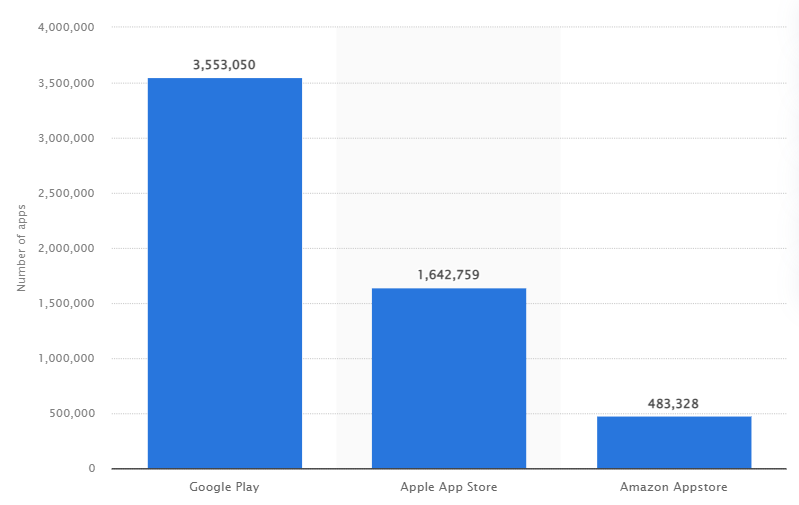
Source: Statista
App stores aim to rank the most suitable app to relevant search terms. Of course, as an app business, you would want to be the highest-ranking app for all pertinent keywords to your app.
If you have the budget, you may also consider paid app store ads. The research group, Forresters, found that 63% of apps are discovered by app store searches alone. So investing can make a huge difference to your download numbers if your app performs well in search result rankings.
How to improve your app’s visibility in the app stores
📱 Place a keyword in your app’s title
Keywords aren’t required in the title of your app. For instance, apps like Uber, Airbnb, and Headspace do not contain a keyword relating to their function. Instead, they have built a brand that has made the name of their business synonymous with their purpose.
Nevertheless, it does help to gain early traction and downloads if an app contains a relevant keyword in its title.
📱 Optimize keywords in your app description
Keywords work the same way in app stores as in search engines. Selecting and placing relevant keywords in your app’s description can significantly affect your ranking position.
📱 Add a strong app subtitle
Similarly, adding a strong app subtitle or caption is another opportunity to add a keyword related to your app. It’s also an opportunity to add a strong call to action to inspire users to download it.
📱 Include quality screenshots and app images
Great designs and visuals sell apps. Aesthetic designs make your app more attractive to download. Both app stores allow developers to upload multiple images to showcase their apps creatively.
📱 Create an attractive app icon
App icons are what users see first when an app appears in the search results or category listings. Therefore, it’s important to have an attractive and memorable icon for this reason. Ultimately, it is likely to result in more attention and downloads.
📱 Gather positive app store reviews
Users read app store reviews before downloading an app. They want to know whether it’s worth investing time and energy to learn or try for the first time. Encouraging reviews from satisfied customers is a great way to give your app a solid first impression.
6. Implementing social media marketing
With a global user base of 5.22 billion people actively engaging on social media, the potential reach for app marketing is immense, making these platforms invaluable tools for targeted advertising.
Most social media platforms are willing to sell advertising space to businesses to reach these users. As such, they have all created a series of marketing tools that allow companies to target a specific group of users according to unique characteristics.
For instance, a user who has previously visited a fishing group or page will likely receive advertisements for fishing rods. An ad for a fishing rod is then placed in-between user-generated content, often blending in seamlessly — users don’t even recognize it as an advertisement.
This strategy results in users paying more attention to the mobile ad as it’s designed to prevent the audience from tuning it out.
But how do app businesses determine if an advertisement is effective? Most social media platforms have built-in analytic tools that automatically calculate campaign results. These tools are extremely valuable to allow a business to see which marketing activities are working and which aren’t.
To learn more about measuring the effectiveness of marketing campaigns, read our article on The Most Powerful Mobile App Analytic Tools & Which to Use.
7. Tapping relevant influencers
It is a well-known fact that audiences are more likely to pay attention and take action on a personally recommended product or service than an advertisement broadcasted by a business. That’s precisely what influencer marketing seeks to replicate, especially at the micro-scale.
Influencer marketing is closely related to social media advertisement but with one major exception. Social media marketing pays the social platform to conduct advertising campaigns. But with influencer marketing, the actual content creator on the social media platform is employed to endorse a product or service personally.
Influencer marketing has become increasingly popular and for a good reason. In fact, it landed the top spot in HubSpot’s list of top marketing trends in 2022.

Source: HubSpot
Take note, however, that not all influencers will be as effective as others. So, experiment with different types of influencers and consider forming long-term relationships with the most effective ones.
8. Conducting content marketing
Content marketing is the practice of providing valuable, interesting, or helpful content to a target demographic. It aims to build brand presence and authority and inspire trust. Once established, the target audience is far more likely to choose your services than a competitor’s.
Content marketing covers many facets, which include:
📱 Articles and blogs
📱 Videos, webinars, and web shows
📱 Free guides and ebooks
📱 Podcasts
📱 Infographics
📱 Statistic and industry reports
📱 Newsletters
Post-launch stage
App downloads don’t increase magically. In the current landscape of mobile apps, you must proactively and consistently work to make your app stand out. Continuous marketing efforts post-launch are essential for sustained app success, brand building, and maximizing the app’s potential in the dynamic mobile app ecosystem.
9. Turning your users into your marketing team
Over the life of your app business, it’s not unexpected that you will invest quite a lot of money into your marketing strategies. You must spend money to make money at the end of the day.
But do you really want to invest the same amount of money into converting your demographic in 10 years? Thankfully there’s a product strategy that can greatly reduce the amount of marketing spend.
It’s called a viral loop (sometimes called a growth hack or growth feature). A viral loop is a product feature that aims to turn your app users into your own app marketing team. It works by encouraging “word of mouth” style marketing techniques.
The basic viral loop involves the following steps:
1️⃣ The user becomes aware of the app.
2️⃣ The user installs the app.
3️⃣ A desire to share the app with a new user is created.
4️⃣ The user then shares the app with a new user.
5️⃣ A new user becomes aware of the app.
⭕ Rinse and repeat.
A viral loop can manifest in many different forms depending on the type of your app.
For a ride-sharing app service, a discount offer can be given to users who invite their friends to the app. Alternatively, a fitness app could offer a second bonus subscription for users to share with friends.
10. Launching PR activities and events
Digital products often require digital marketing strategies. But let’s not forget about the power of human-to-human interactions. Traditional marketing techniques are by no means dead.
Throwing a good old-fashioned launch party, PR stunt, or media day could be pivotal to the success of your product. It’s how many mobile technology businesses blossomed to mainstream appeal (like Uber).
Think of the way Apple launches a new product. Or the way a CEO of a tech business delivers a keynote at a conference or industry event.
An effective PR marketing activity needs to grab attention, spark curiosity and funnel all that hype back into the product. The easiest way to start going down this path is to take your product directly to a small group of your intended users.
For example, an app that teaches fashion and beauty techniques could approach a local beauty studio to host a launch party. The event could feature a live demonstration of what the app does and offer attendees an exclusive free subscription.
11. Staying Agile
It’s paramount to stay agile when engaging in app marketing activities. You should never feel chained to a specific technique, even if you have invested considerable time and money into it.
If a platform or technique isn’t working for you after thorough experimentation and research, cut it out immediately. There’s no point in spending money on strategies that aren’t effective.
Additionally, mobile app promotion strategies can be temperamental and seasonal. An approach could produce dividends in one month and could be largely ineffective after another. For this reason, your team should always be researching to see what’s working, what’s trending, and where your audience is going next.
Take inspiration from one of our clients, MyDeal.
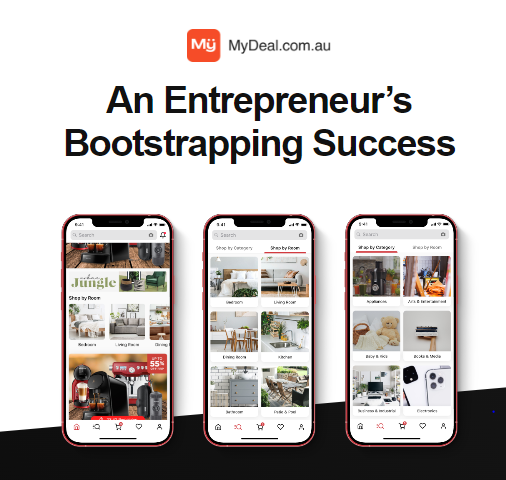
MyDeal founder and entrepreneur, Sean, had been unsuccessful with his first startup attempt. But this didn’t stop him from going again.
Realizing that action and forward momentum are powerful tools for success in app development, he didn’t wait for investors and confidently bootstrapped the platform in the early years.
In 2020, he came to us to help him complete his vision of an app to reach new audiences and provide a seamless mobile shopping experience to users.
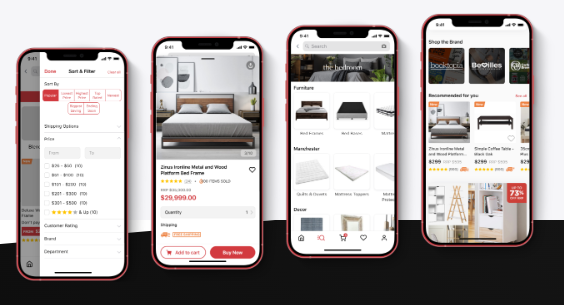
Together, we built an app that has helped Sean and MyDeal dominate more recognized brands like H&M and IKEA across the app stores. Since launching, MyDeal has recorded multiple milestones, including achieving a gross sales increase of 111.1% — in a span of a year!
💡Bonus tip!
Partnering with a mobile app marketing specialist
Marketing an app can be a time-intensive activity. It can be difficult to get up and running without a marketing expert on your side.
You have a technology business to operate. Is your time really best spent testing out marketing strategies?
Likely not.
Consider outsourcing your marketing activities to a specialist capable of guiding you from pre-launch to post-launch. A dedicated app marketer can quickly set up your marketing strategies and analytics so you can start seeing a positive return on your investment as fast as possible.
If you need help growing your app, organize a chat with our growth specialists today.
Think long-term
While there are a whole bunch of options to market your app, it’s not necessary to try each. Instead, choose to invest in the one that’s naturally a better fit for the type of app you have created and your target market.
But regardless of the strategy you choose to pursue, it should always be geared toward creating long-term sustainable relationships with your users.
Just take a look at the most successful apps. From Uber to Airtasker to Spotify, they all have a knack for creating long-term relationships with their user base.
After all, the longer a user is active on your app, the more opportunities you create for future conversions through in-app purchases and more.
Happy marketing!
And if you need a full-journey app development partner capable of building you a world-class digital product and crafting a brilliant app marketing strategy, contact Appetiser today.


